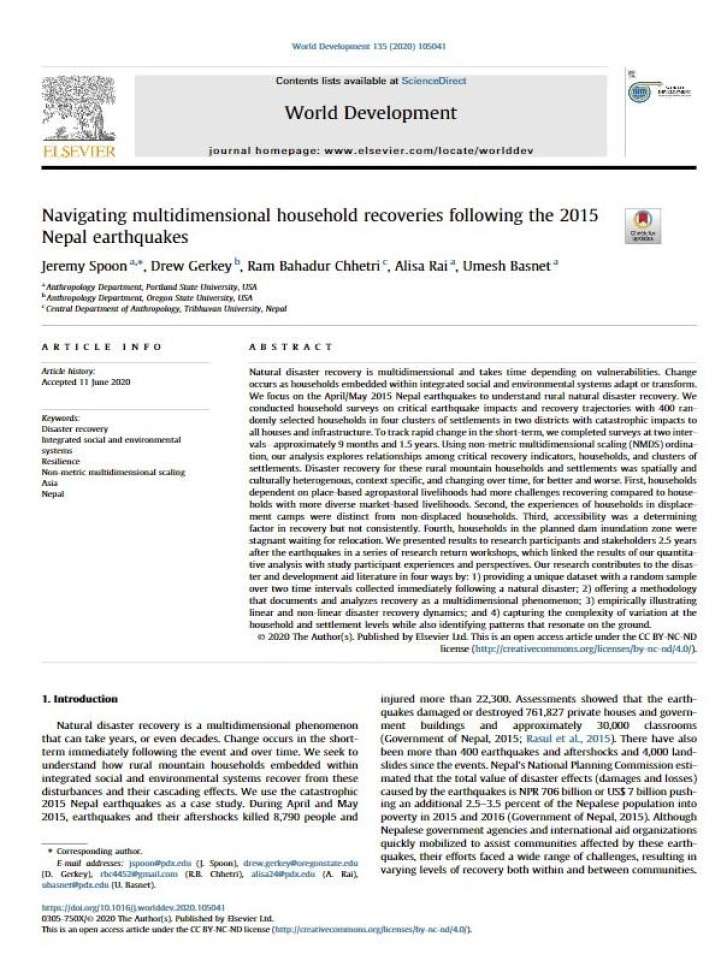Navigating multidimensional household recoveries following the 2015 Nepal earthquakes
Natural disaster recovery is multidimensional and takes time depending on vulnerabilities. Change occurs as households embedded within integrated social and environmental systems adapt or transform.This study focuses on the April/May 2015 Nepal earthquakes to understand rural natural disaster recovery. Household surveys were conducted on critical earthquake impacts and recovery trajectories with 400 ran-domly selected households in four clusters of settlements in two districts with catastrophic impacts to all houses and infrastructure. The analysis explores relationships among critical recovery indicators, households, and clusters of settlements.
Disaster recovery for these rural mountain households and settlements was spatially and culturally heterogenous, context specific, and changing over time, for better and worse.
- Households dependent on place-based agropastoral livelihoods had more challenges recovering compared to house-holds with more diverse market-based livelihoods,
- The experiences of households in displace-ment camps were distinct from non-displaced households,
- Accessibility was a determining factor in recovery but not consistently, and
- Households in the planned dam inundation zone were stagnant waiting for relocation.
Explore further

